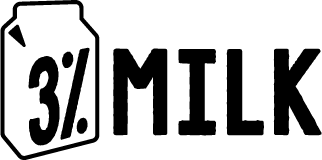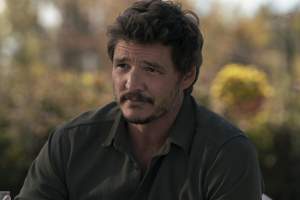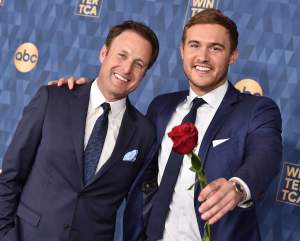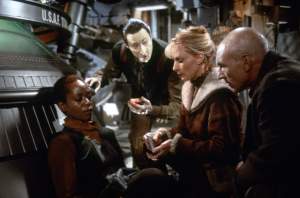Vein Popping Skull Cap

nico/moviestillsdb
Austin Butler underwent a full-on transformation that was obvious the second he appeared on screen as the sociopathic antagonist Feyd-Rautha Harknonnen. No longer was he the blonde, blue-eyed heartthrob from Anaheim. In Dune 2, the mesmerizing star appears as a hairless, eye-browless brute with seriously intimidating black teeth! The stellar make-up team used practical effects to achieve this menacing look, with Butler spending over three hours in the make-up chair just having his bald cap applied! “It comes over [my head] to my eyelids, covering my eyebrows and everything,” Butler told USA Today. “Look at the attention to detail on that bald cap with a vein running through it. It’s a work of art.”
Moves Like Jagger

nico/moviestillsdb
Besides all the makeup and prosthetics, Austin Butler endured rigorous physical training to bring such an imposing presence to the movie screen. By following a workout routine made by an ex-Navy SEAL member, Butler reportedly gained 25 pounds of muscle while training for four months in Budapest. But that’s not to say that movie magic didn’t come into play to achieve the finished product. Feyd-Rautha’s monochrome gladiator-style fight was filmed with specially designed black-and-white infrared cameras. As for the finished product, Denis Villeneuve reportedly described Feyd-Rautha as “a cross between a psychopathic killer, an Olympic sword master, a snake, and Mick Jagger.” Funny enough, Jagger had been attached to play the character in a failed Dune adaptation in the 1970s.
‘Method Schmethod’

reesdcyar/moviestillsdb
When it came to the actual portrayal of Feyd-Rautha, Butler took a different tact than he had for past roles, in which he’d been known to employ some pretty serious method acting. Butler told Variety.com the following:
“I’ve definitely in the past, with Elvis (2022), explored living within that world for three years and that being the only thing that I think about day and night. With Feyd, I knew that that would be unhealthy for my family and friends…So I made a conscious decision to have a boundary. It allowed for more freedom between action and cut because I knew I was going to protect everybody else outside of the context of what we were doing. That’s not to say that it doesn’t bleed into your life. But I knew that I wasn’t going to do anything dangerous outside of that boundary, and in a way that allowed me to go deeper.”
The Voice Choice

rokit88/moviestillsdb
Okay, admit it. When you heard Austin Butler was cast as the antagonist Feyd-Rautha, weren’t you expecting to hear a little Elvis twang seeping into that harsh Harkonnen voice? Especially since Butler gave months and months of interviews where he just couldn’t seem to kick his hard-earned Elvis accent? For Dune: Part 2, Butler chose to model his vocal intonations and tonality after Stellan Skarsgard, wanting to suggest that Feyd Rautha grew up around his monstrous uncle Baron Harkonnen, played by the Swedish actor. Interestingly, Skaarsgard was unaware Butler met with a vocal coach to model his voice and was reportedly taken aback when he finally heard it. “I laughed so much because it was so obvious that he really enjoyed being evil,” he told MensHealth.com, adding Butler’s voice became “like hearing an echo… it was very, very precise.”
Language Roots

reesdcyar/moviestillsdb
Audiences may have thought that the Fremen language used in the film was a completely made-up dialect, but several words and phrases have their roots in languages throughout the world. For example, in Dune: Part 2, the term “Kwisatz Haderach” is a Ben Gesserit phrase for a long-awaited male who can essentially transcend time and space with his mind. Well, Kwisatz Haderach refers to the Hebrew “Kefitzat Haderech” which means “a miraculous journey between two distant places in a brief time.” “Mahdi”, which Paul is called by the Fremen throughout the film, is rooted in Arabic. “Mahdi Al Montathar” is a prominent figure in Islam who is said to have appeared during the end of time and cleansed the world of evil. Paul, himself, becomes a similar figure to the Fremen people in Dune. Besides the Arabic and Hebrew roots, French, Greek, Romani, Slavik, and Sanskrit have their stake in the Fremen language, as well.
Makeup Magic

nico/moviestillsdb
Austin Butler wasn’t the only actor to go through the wringer in the makeup chair. Stellan Skarsgard’s Harkonnen body makeup took a shocking 8 hours to apply and 2 hours to remove! Skarsgard told gamespot.com the following:
“How do you do your job with 40 kilos of prosthetics on? […] You use the resistance of the costume to make him slower, to make him become more dangerous in a way. What you want to do is to put a stamp on the screen. That means that you want him to have sort of a physical presence that when he comes in, he puts a stamp there, and that casts a shadow for the rest of the film. […] So you don’t have to put him in [lots of] scenes or anything. He just has to be that powerful. And to construct that character was fun.”
Steaming over Streaming

rokit88/moviestillsdb
For all the hype that surrounded Dune coming to the big screen, Dune: Part 2 was far from a sure thing to even make it to production. Dune and Dune: Part Two were not filmed back-to-back, and the studio’s approval of the second film completely depended on the success of the first, whose release was complicated by the COVID-19 pandemic and was released in theaters on the same day it premiered on HBO Max. At the time, Dune Director Denis Vilanueve was vocally upset about the move to have Dune available on streaming so quickly, telling DigitalSpy.com: “Frankly, to watch Dune on a television, the best way I can compare it is to drive a speedboat in your bathtub. For me, it’s ridiculous. It’s a movie that has been made as a tribute to the big-screen experience.” Thankfully for all of us Dune fans, Dune: Part 2 was greenlit just four days after the release of the first Dune’s box office success.
Zendaya

nico/moviestillsdb
Zendaya’s character, Chani, had a much more expansive role in Dune: Part 2 than she did in the original novel. But is Zendaya ready to tackle an even larger role shortly… in the director’s chair? Denis Villeneuve said of Zendaya, “She’s so clever, but shows she’s brilliant and her strong presence and she was always on set even when she was not shooting. Just sitting between [cinematographer Greig Fraser] and I listening, listening and listening. So I would not be surprised that one day we learn that she wants to [direct].” Challengers Director Luca Guadagnino told the New York Times, “Z is a director. I told you many times, and I repeat it now to The Times.” Zendaya herself, though, told the New York Times that she is still not “quite confident enough to step into directing.”
Painful Cuts

nico/moviestillsdb
For those yearning for a Director’s Cut with deleted scenes, Denis Villeneuve has killed any such hopes. He told Vulture.com:
“I’m a strong believer that when it’s not in the movie, it’s dead. I kill darlings, and it’s painful for me. Sometimes I remove shots and I say, ‘I cannot believe I’m cutting this out.’ I feel like a samurai opening my gut. It’s painful, so I cannot go back after that and create a Frankenstein and try to reanimate things that I killed. It’s too painful. When it’s dead, it’s dead, and it’s dead for a reason. But yes, it is a painful project, but it is my job. The movie prevails. I’m very, I think, severe in the editing room. I’m not thinking about my ego, I’m thinking about the movie.”
Black Sun

rokit88/moviestillsdb
An unforgettable sequence in Dune: Part 2 was Feyd-Rautha’s fight on Giedi Prime (the Harknonnen homeworld), which was all in black and white. It was so shockingly breathtaking, that most people didn’t even question it. But what was the reason for the abrupt switch in color scheme? The black-and-white lighting was induced by a black sun that the planet orbits around. It’s the first time the Giedi sun has been shown in a Dune adaptation. Greg Fraser, the cinematographer for both Dune and Dune: Part Two suggested shooting the sequence with infrared cameras to give the characters’ skin a translucent texture.







